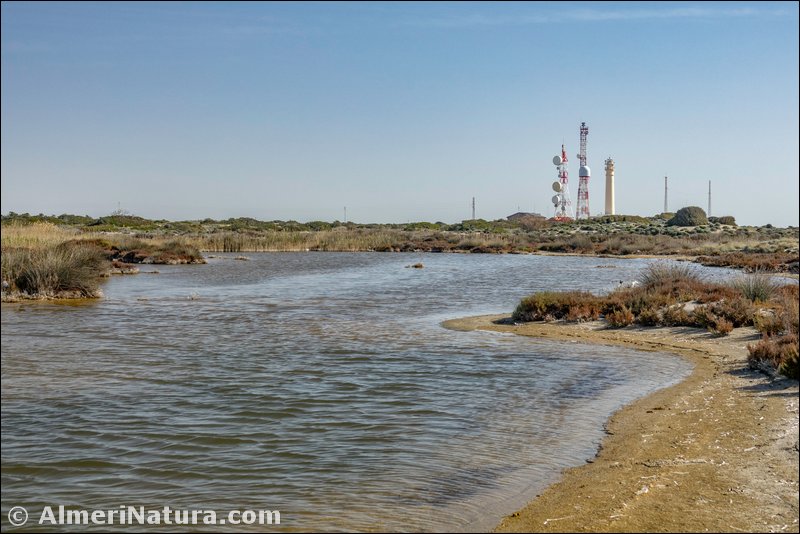 The Natural Area of Punta Entinas-Sabinar and the Nature Reserve that it includes, is located in the municipalities of El Ejido and Roquetas de Mar. The Natural Area has an area of 1944.76 ha, while the Nature Reserve has an area of 785 ha. It is made up of a string of dunes, close to the Mediterranean coast, amongst which plenty of ponds can be found (called “charcones”), giving different biotypes within a Mediterranean sub-arid ecosystem. The annual average temperatures are around 18º C, while the annual average rainfall is between 200 and 250 mm. The main threats to this natural site are the proximity of intensive cultivation under plastic (tents) and the urban expansion due to tourism in the area.
The Natural Area of Punta Entinas-Sabinar and the Nature Reserve that it includes, is located in the municipalities of El Ejido and Roquetas de Mar. The Natural Area has an area of 1944.76 ha, while the Nature Reserve has an area of 785 ha. It is made up of a string of dunes, close to the Mediterranean coast, amongst which plenty of ponds can be found (called “charcones”), giving different biotypes within a Mediterranean sub-arid ecosystem. The annual average temperatures are around 18º C, while the annual average rainfall is between 200 and 250 mm. The main threats to this natural site are the proximity of intensive cultivation under plastic (tents) and the urban expansion due to tourism in the area.
The main species of flora that can be found in this ecosystem are the “sabinas suaves” or Phoenicean Juniper (Juniperus Phoenicea), that gives the name to the place – Sabinar, and the Lentisc (Pistacia lentiscus). On the most saline land, the halophitic vegetation of the Chenopodiaceae family (glassworts and saltworts) proliferate. In general we can find the following plants all over the Natural Park, “cambroneras” or Tea Tree (Lycium intrincatum), Giant Reed (Arundo donax), Sharp Rush (Juncus acutus), “bolaga” or “bufalaga marina” (Thymelaea hirsuta), Ziziphus (Ziziphus lotus), Sea lavander (Limonium angustebracteatum), Yellow Sea Aster (Asteriscus maritimus), “roqueta de mar” or Sea Rocket (Cakile maritima) and “carrizal” (Phragmites australis). Some parasitic plants like Cynomorium coccineum or the rare Phelipanche olbiensis. The most outstanding flora is Ononis talaverae, Scrophularia frutescens and Wahlenbergia lobelioides subsp. nutabunda. The presence of the very rare fungus Beenakia mediterranea, is also remarkable. The seabed is rich in flora and fauna too, including the most western undersea meadows of Posidonia oceanica in the Mediterranean.
As to the fauna, the ornithological interest of this area is remarkable, where hundreds of bird species can be observed, such as Audouin’s Gull (Larus audouinii) and Flamingo (Phoenicopterus ruber). All over the Natural Area in its pools, live outstanding species, many of them listed as vulnerable or endangered, such as Coot (Fulica atra), Mallard (Anas platyrhynchos), White-headed Duck (Oxyura leucocephala) and Dunlin (Calidris alpina).
(Adapted and translated from Wikipedia)
Galleries




 Landscapes
Landscapes Flora
Flora